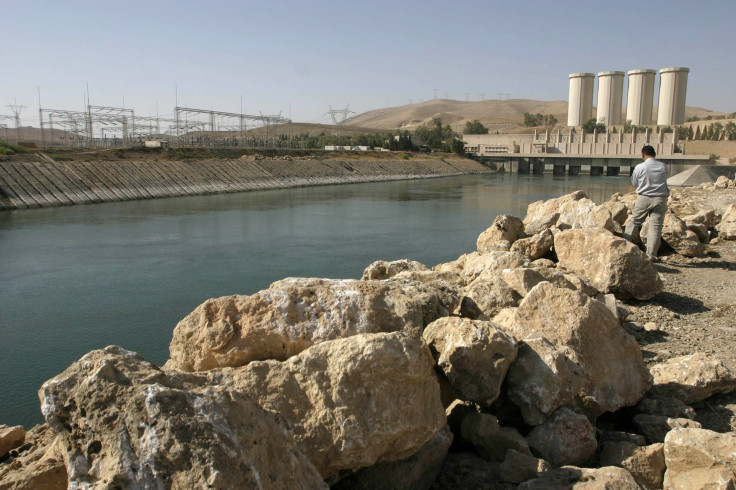Mosul Dam: Why The US Aided Kurdish Forces To Recapture Strategic Structure From ISIS

Updated 2:30 p.m.: A Kurdish military spokesman said troops are in "full control" of Mosul Dam and the surrounding area.
Kurdish forces said they recaptured Mosul Dam in northern Iraq from Islamic State militants Monday following U.S. airstrikes that supported Kurdish troops in an operation that began Friday. The dam, built in the 1980s, is the biggest in Iraq and has been under control of the Islamic State, formerly the Islamic State of Iraq and Syria or ISIS, since August. The recapture was significant, not only because it provides electricity to the city of Mosul, but because destruction of the dam could wreak havoc.
What Is The Mosul Dam?
The Mosul Dam is 3.4 kilometers wide (around 2 miles) and sits 45 miles north of Mosul. The dam's reservoirs can hold 11.1 cubic kilometers (around 2.7 cubic miles) of water, making it Iraq's largest dam and the fourth-largest dam in the Middle East. The Mosul Dam generates 320 MW of electricity a day and provides electricity to the residents of Mosul. While not quite on the level of the world's largest dam, the Three Gorges Dam, in Hubei province, China, which generates 22,000 MW of electricity, the Mosul Dam is important to Iraq and the residents of Mosul.
Why is The Mosul Dam Important?
Aside from powering the city of Mosul, and being a valuable piece of infrastructure, the Mosul Dam could be used by ISIS as a weapon. Engineers have long complained about the dam's location and construction, citing major structural problems because it was built on gypsum, which is water-soluble, leading to erosion and seepage. The United States recently spent $27 million to shore up the dam, BBC reported.
"The dam is a key component in the nation's power grid, with four 200-MW turbines. Ranked by the World Commission on Dams as the Middle East's fourth largest, in reservoir capacity, it also captures spring snowmelt from Turkey, about 70 miles north, and stores water for irrigation. A breach would not only kill people downstream quickly, it would also cause prolonged suffering through power outage and drought," a 2003 report in Engineering News-Record says.
If ISIS breached the dam, or if it somehow failed, it could send a 65-foot wave of water crashing into Mosul and floodwaters could reach as far as Baghdad. "A catastrophic failure of the Mosul Dam would result in flooding along the Tigris River all the way to Baghdad," a 2006 report from the Office of the Special Inspector General for Iraq Reconstruction warns. A failure of the Mosul Dam could kill 500,000 people.
© Copyright IBTimes 2024. All rights reserved.





















